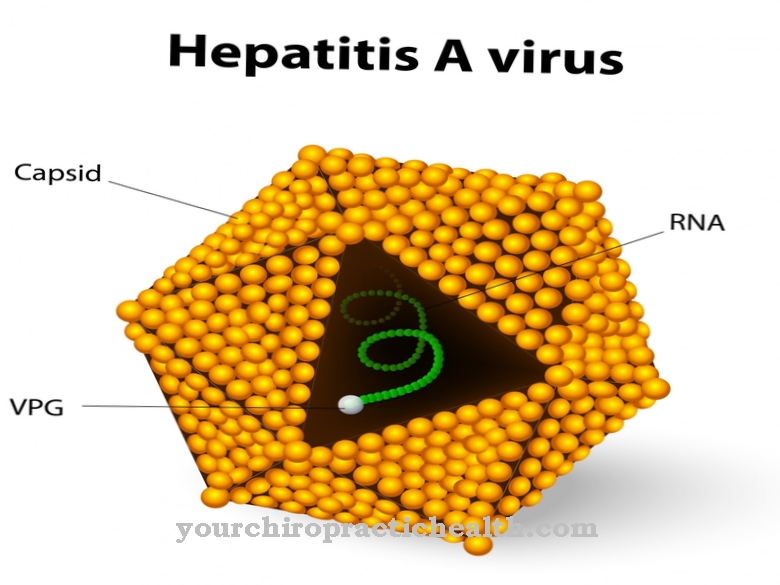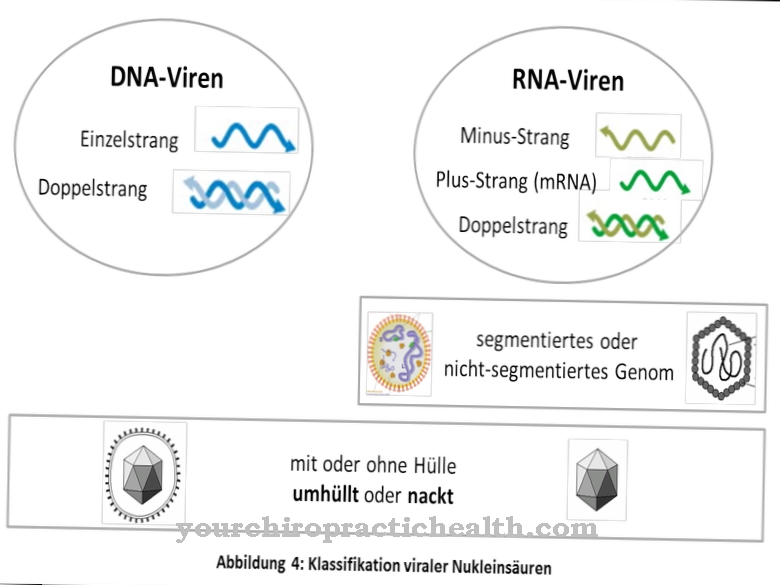Enterococci play an important role for the intestinal flora and accordingly for the immune system. However, nosocomially acquired infectious diseases can in many cases be traced back to enterococcal strains.
What are enterococci?
As Enterococci is an independent genus of gram-positive lactic acid bacteria with a spherical (coconut) morphology, which is assigned to the Streptococcaceae family.
Seen microscopically, they usually form short chains or are arranged in pairs. Enterococci, especially the Enterococcus faecalis and Enterococcus faecium strains, occur physiologically in the intestinal flora of humans and animals, where they are assigned a supporting function in digestion.
Enterococci can infect the urogenital tract (urinary and sexual apparatus) via a smear infection and cause urinary tract infections and fallopian tube infections. In general, a distinction is made between the Enterococcus strains Enterococcus durans, Enterococcus avium, Enterococcus faecalis, Enterococcus faecium, Enterococcus gallinarum and Enterococcus solitarius as the most important representatives of the more than 30 known species.
Meaning & function
The healthy intestinal flora is colonized by up to 200 intestinal bacteria and just as many fungi, which keep each other in balance so that no pathogenic colonization can take place. The intestinal flora plays a supporting role for the immune system and also regulates the synthesis of essential vitamins.
The enterococcal strains Enterococcus faecalis and Enterococcus faecium, which can survive in the intestinal tract due to their resistance (insensitivity to high and low pH values and to bile), are of particular physiological importance for the digestive system. Enterococcal species such as Enterococcus faecalis and Enterococcus faecium can also be found not only in the intestinal flora, but also in breast milk.
As a result, the digestive tract of the child to be breastfed is supplied with physiologically important microorganisms postnatally and a healthy intestinal flora can gradually build up, which at the same time protects the child's organism from pathogenic germs. Enterococci also ensure an acidic environment in their environment, which in turn inhibits the growth of a large number of pathogenic germs that require a higher pH value for cell division.
As a result of these positive characteristics, enterococci are used in dairy products such as yoghurt, goat cheese, raw sausages or camemberts as probiotic fermentation agents to protect against pathogenic microorganisms and to build up the intestinal flora.
Enterococci can be used prophylactically as probiotics (especially Enterococcus faecalis) to protect against diarrhea and thus against increased fluid loss, especially after antibiotic therapies, in which not only the bacteria that cause infection, but also the physiologically important bacteria of the intestinal flora are killed .
Diseases
As facultative pathogenic germs can Enterococci however, they can cause discomfort and infections if they exit the intestine and colonize neighboring structures.
Enterococcus faecalis and Enterococcus faecium are responsible for a number of nosocomial diseases.In particular, urinary tract infections, septic infections, endo- and peritonitis (inflammation of the inner lining of the heart and peritoneum) as well as intra-abdominal abscesses, wound infections and catheter-associated infections are in the foreground in this context.
In most cases, urinary tract infections are caused by bacterial colonization of the lower urinary tract. This is particularly true for women, as the urethral and intestinal openings are comparatively close to each other. In addition, due to the shorter urethra, there is an increased risk of an infection spreading to the urinary bladder (cystitis) in women.
Above all, people with a weakened immune system as a result of an HIV infection, chemotherapeutic, antibacterial and / or immunosuppressive therapy as well as with an underlying disease with a severe course or heart or thorax surgery have an increased risk of nosocomial enterococcal infections.
It is estimated that up to 15 percent of endocarditis and about 30 percent of septic infections in adults can be attributed to enterococci, while acute urinary tract infections are associated with enterococci in 10 to 20 percent of cases. In particular, infections with the so-called vancomycin-resistant enterococci (VRE) can be fatal in cancer patients treated with chemotherapy.
Vancomycin-resistant enterococci are also the most common cause of bacteremia following antibiotic treatment measures. In rare cases, the enterococcus faecalis and Enterococcus faecium strains can cause enterococcal pneumonia (ventilator-associated), pneumonia with a mostly subacute course. Enterococci are also often involved in mixed infections such as cholecystitis (inflammation of the gall bladder).





.jpg)



















.jpg)


